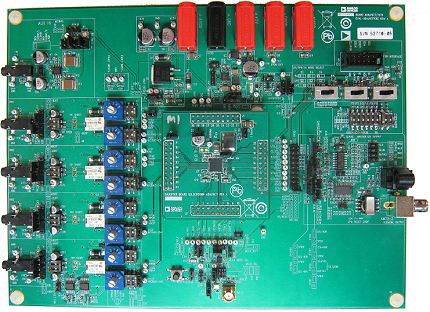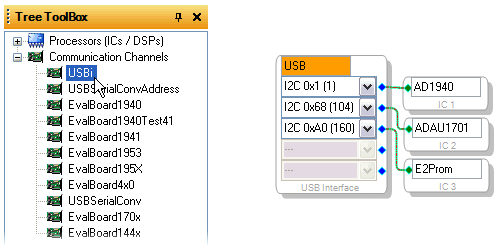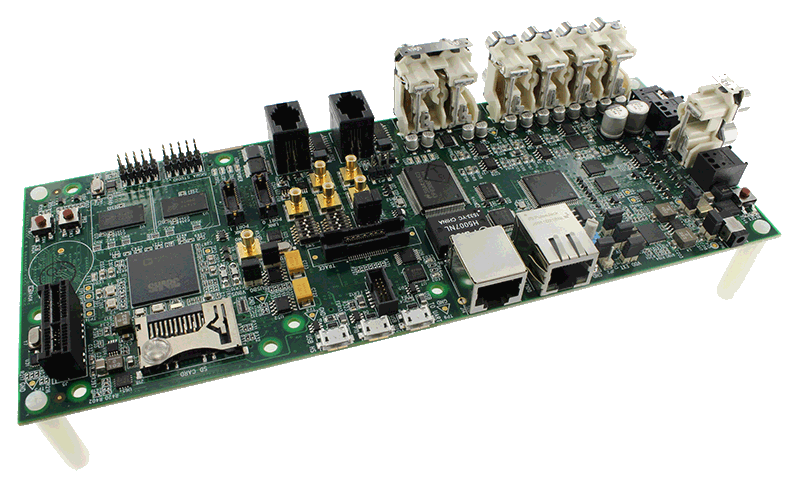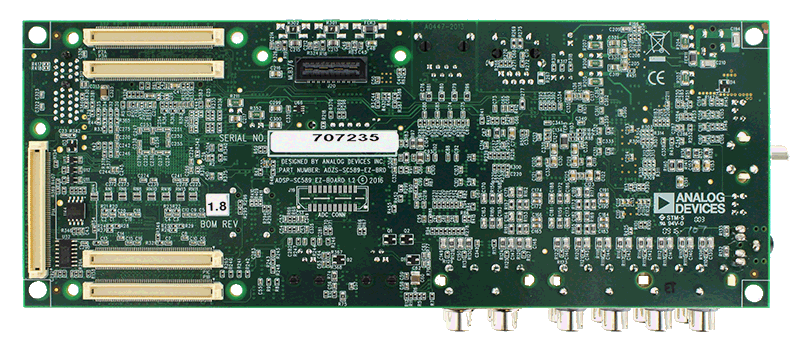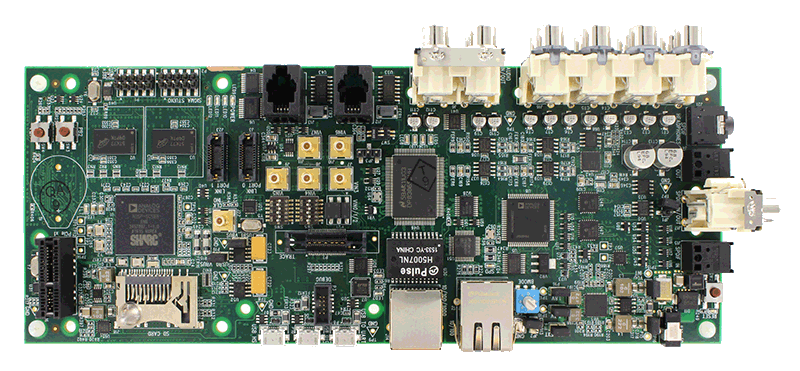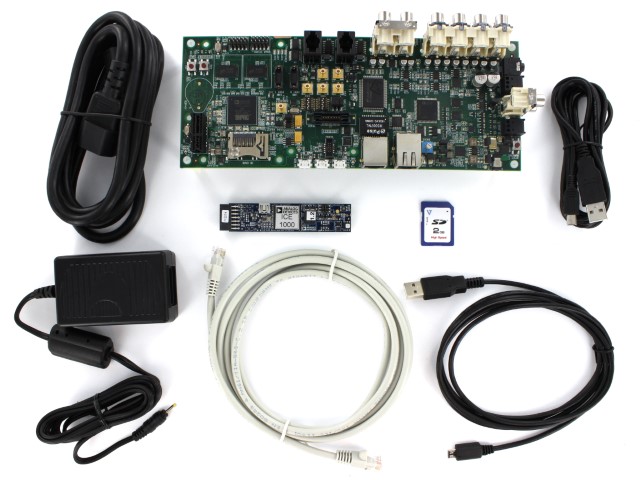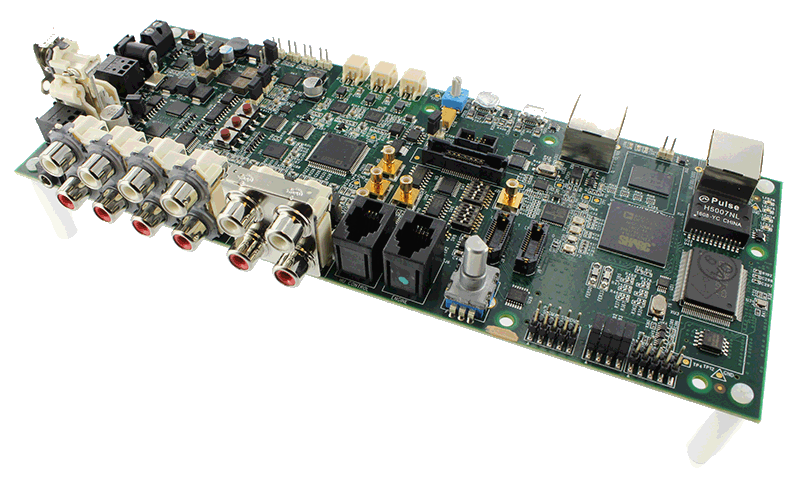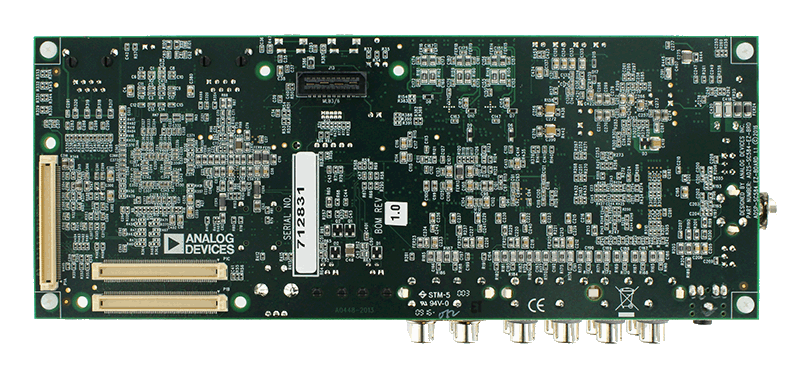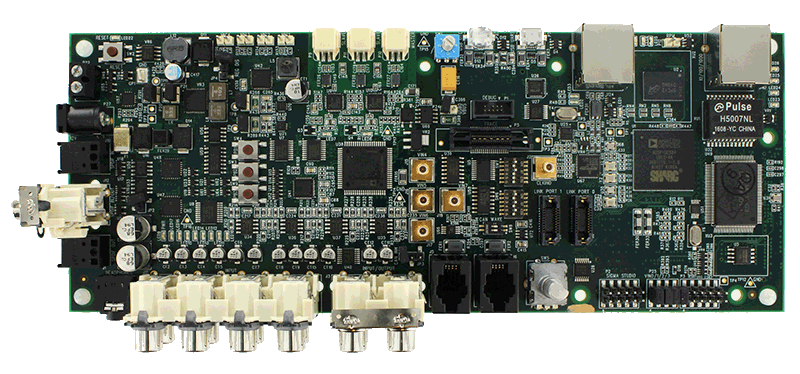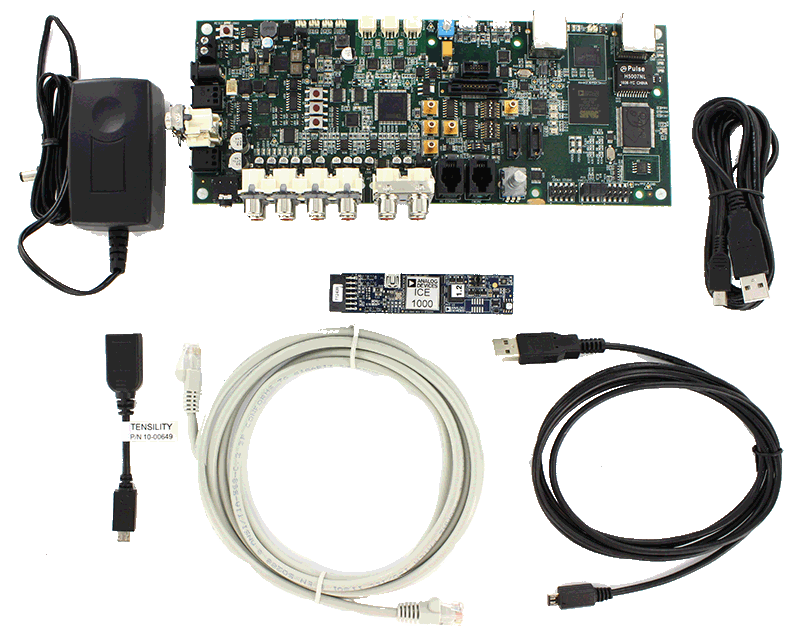ADAU1979
PRODUCTIONQuad Analog-to-Digital Converter (ADC)
- Part Models
- 2
- 1ku List Price
- Starting From $3.71
Part Details
- Four 4.5 V rms (typical) differential inputs
- On-chip phase-locked loop (PLL) for master clock
- Low electromagnetic interference (EMI) design
- 109 dB (typical) analog-to-digital converter (ADC) dynamic range
- Total harmonic distortion + noise (THD + N): −95 dB (typical)
- Selectable digital high-pass filter
- 24-bit stereo ADC with 8 kHz to 192 kHz sample rates
- Digital volume control with autoramp function
- I2C/SPI controllable for flexibility
- Software-controllable clickless mute
- Software power-down
- Right justified, left justified, I2S, and TDM modes
- Master and slave operation modes
- 40-lead LFCSP
- Qualified for automotive applications
The ADAU1979 incorporates four high performance, analog-to-digital converters (ADCs) with 4.5 V rms capable ac-coupled inputs. The ADCs use a multibit sigma-delta (Σ-Δ) architecture with continuous time front end for low EMI. An I2C/serial peripheral interface (SPI) control port is included that allows a microcontroller to adjust volume and many other parameters. The ADAU1979 uses only a single 3.3 V supply. The device internally generates the required digital DVDD supply. The low power architecture reduces the power consumption. The on-chip PLL can derive the master clock from an external clock input or frame clock (sample rate clock). When fed with the frame clock, it eliminates the need for a separate high frequency master clock in the system. The ADAU1979 is available in a 40-lead LFCSP package.
Note that throughout the data sheet, multifunction pins, such as SCL/CCLK, are referred to either by the entire pin name or by a single function of the pin, for example, CCLK, when only that function is relevant.
Applications
- Automotive audio systems
- Active noise cancellation systems
Documentation
Data Sheet 1
User Guide 1
Device Drivers 1
ADI has always placed the highest emphasis on delivering products that meet the maximum levels of quality and reliability. We achieve this by incorporating quality and reliability checks in every scope of product and process design, and in the manufacturing process as well. "Zero defects" for shipped products is always our goal. View our quality and reliability program and certifications for more information.
| Part Model | Pin/Package Drawing | Documentation | CAD Symbols, Footprints, and 3D Models |
|---|---|---|---|
| ADAU1979WBCPZ | 40-Lead LFCSP (6mm x 6mm w/ EP) | ||
| ADAU1979WBCPZ-RL | 40-Lead LFCSP (6mm x 6mm w/ EP) |
This is the most up-to-date revision of the Data Sheet.
Software Resources
Device Drivers 1
Evaluation Software 0
Can't find the software or driver you need?
Evaluation Kits
Latest Discussions
No discussions on ADAU1979 yet. Have something to say?
Start a Discussion on EngineerZone®
